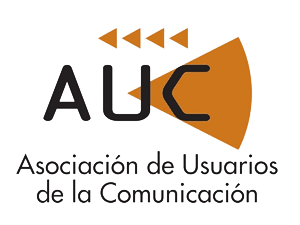Resumen
Shareting es un término de reciente creación que surge de la contracción de las palabras inglesas share (compartir) y parenting (ser padre). Se emplea para referirse al hecho de publicar imágenes de los hijos en redes sociales. Estas, por su propia estructura y forma de uso, son el espacio perfecto para que este tipo de acciones proliferen.
Este fenómeno tiene importantes implicaciones puesto que puede afectar tanto a la identidad de los menores como a su propia seguridad. Todo ello adquiere mayores dimensiones cuando los padres que hacen shareting no son personas anónimas sino que son influencers y/o personajes públicos que comparten su contenido con miles, e incluso millones, de seguidores. Los niños han pasado a formar parte del contenido que comparten del mismo modo que lo es la moda, el estilo de vida o la práctica de deporte.
El objetivo de la presente investigación es establecer un marco teórico que ayude a entender todas las dimensiones y formas en las que se manifiesta el sharenting con influencers así como sus posibles efectos en los menores.
Para ello se ha llevado a cabo una metodología basada en la revisión sistemática de la literatura publicada hasta el momento identificando a los autores y sus aportaciones más relevantes en este área.
Tras la investigación realizada los resultados hallados indican que el shareting, que comenzó como una forma natural de compartir la faceta como padres, ha pasado a ser para los influencers una forma más de atraer la inversión de marcas y anunciantes. Este tipo de acciones reciben el nombre de sharenting labour y no es más que la acción publicitaria que realizan los influencers a través del shareting. Es decir, el uso de los niños en Instagram por parte de los padres influencers está tan consolidado como parte de acciones comerciales que tiene su propia denominación.
Adicionalmente, existen los denominados instamums e instadads (ambos vienen de la contracción de Instragram y mum o dad, mamá o papá en inglés) para referirse a perfiles públicos cuyo contenido gira en torno a la vida familiar. Aquí también se da el sharenting labour pero queda más integrado con el resto de publicaciones.
En cualquiera de los dos casos la figura del menor queda expuesta, comprometida y desprotegida. Hay países como Estados Unidos que dejan a elección de los padres la difusión de fotografías y vídeos de sus hijos y otros, como Francia, que prohíben taxativamente la divulgación de la imagen de una persona sin su consentimiento, incluidos los hijos. En aquellas circunstancias en las que los menores puedan ser expuestos en redes sociales siendo hijos de influencers o personajes públicos el alcance se ve multiplicado exponencialmente porque muchos medios de comunicación repostean las imágenes que ellos publican.
En conclusión, este tipo de acciones pueden provocar desde riesgo de secuestro y agresiones sexuales hasta bullying por parte de otros compañeros. Se crea, además, una identidad pública de los menores sin su consentimiento que deja una huella digital imborrable.
Todo ello plantea un problema de dimensiones éticas y legales por cuanto afecta a la imagen de los menores y cómo son utilizados para generar ingresos y alianzas con marcas.
Por último, cabe añadir que no se han detectado investigaciones previas que analicen la eficacia publicitaria o comunicativa de esta estrategia de creación de contenidos a través del sharenting.
Palabras Clave / Infancia / Influencer / Instagram / Niños / Redes Sociales / Shareting
Abstract
Sharenting is a recently created term that arises from the contraction of the English words share and parenting. It is used to describe the practice of publishing images of children on social networks. Social networks, due to their own structure, are the perfect space for this type of action to proliferate.
This phenomenon has great implications as it affects the identity of minors and their own safety. These negative implications might acquire greater dimension when the parents who do shareting are not anonymous people but are influencers and/or public people who share their content with thousands, and even millions, of followers. Children have become part of the content they share in the same way as fashion, lifestyle or sports.
The objective of this research is to establish a theoretical framework that helps to understand all the dimensions and forms in which sharenting made by influencers manifests itself and the possible effects on minors.
To this end, a systematic review of the literature published to date has been carried out, identifying the most relevant authors and their most important contributions in this field.
As a result of this research, it has been found that shareting, which began as a natural way of sharing the facet as parents, has become another way for influencers to attract investment from brands and advertisers. These types of actions are called sharenting labor and it is nothing more than the advertising action carried out by influencers through shareting. In other words, the use of children on Instagram by parents who are influencers is so consolidated as part of commercial actions that it has its own name.
Additionally, there are the so-called instamums and instadads (both come from the contraction of Instragram and mum or dad) to refer to public profiles whose content revolves around family life. Sharenting labor also occurs in this context, but it is more integrated within the rest of the publications.
In either case, the figure of the minor is exposed, compromised and unprotected. There are countries like the United States that leave the dissemination of photographs and videos of their children to the choice of parents and others, such as France, that strictly prohibit the disclosure of the image of a person without their consent, including children. In those circumstances in which minors can be exposed on social networks as children of influencers or public figures, the reach is multiplied exponentially because many media outlets repost the images they publish.
These types of actions can cause anything from the risk of kidnapping and sexual assault to bullying by other colleagues. Furthermore, a public identity of minors is created or transformed without their consent, leaving an indelible digital footprint.
All the above poses a problem of ethical and legal dimensions as it affects the image of minors and how they are used to generate income and alliances with brands.
Finally, it should be added that no previous research has examined the advertising or communicative effectiveness of this content creation strategy through sharenting.
Keywords / Childhood / Children / Influencer / Instagram / Shareting / Social network
FIRMANTES
| Nombre | Adscripción | Procedencia |
|---|---|---|
| Marisa Sarget Tarifa | Universidad Villanueva | Madrid |
| Alicia Trelles Villanueva | Universidad Villanueva | Madrid |
| Miguel Ángel Martín Cárdaba | Universidad Villanueva | Madrid |
| Rafael Carrasco Polaino | Universidad Complutense de Madrid | Madrid |



















